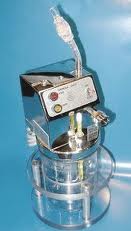
When a machine is given the power to convict a person of a crime, we should be absolutely certain the machine is working properly. In Ohio, machines are used to measure the concentration of alcohol in the breath of drivers. A driver who operates a vehicle with a breath alcohol concentration of .080 or more is guilty of OVI, even if that person’s ability to drive was not impaired by the alcohol. As breath-testing machines have that much power, the accuracy and precision of the machines is critical, so they are subjected to a weekly instrument check. A recent case by an Ohio appellate court downplays the importance of those weekly instrument checks.
 Columbus OVI/DUI Attorney Blog
Columbus OVI/DUI Attorney Blog

